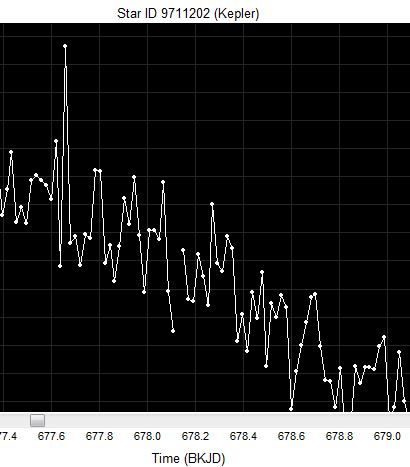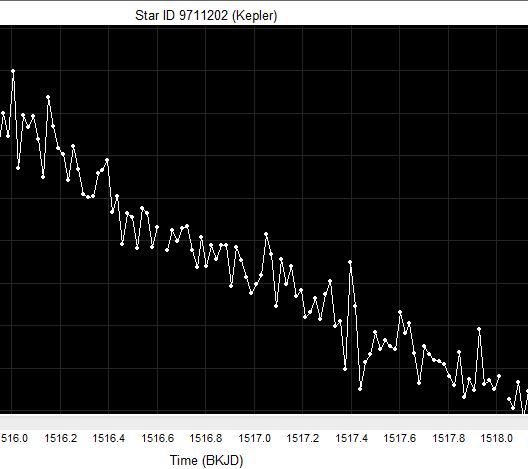KIC 9711202: possible PH find
-
 by
ajamyajax
by
ajamyajax
Took a closer look and there might be two (or more) planet candidates hiding in this M-dwarf system. Star spots always a consideration, but I see several periodic signals of super-Earth radii. The matching durations are similar which is a important, I think. I also fitted the shorter period event that has three possible transits. See charts and data below. p.s. if real, the shorter PC might have evolving orbit.
epochs/periods/durations
s1=457.22 p1=353.10 d1=0.7 (16.8 hrs)
s2=676.2 p2=744.5 d2=1.5 (36.0 hrs)
...(Kepler data for RA/Dec 292.2186,46.4874)
Kepler KIC# [Angular Separation] Kep Mag/ Teff /Stellar Radius / MAST link*
KIC 9711202 [0'] 14.579/3904/0.592* http://archive.stsci.edu/kepler/data_search/search.php?action=Search&ktc_kepler_id=9711202
KIC 9711193 [0.53'] 15.739/4839/0.975* http://archive.stsci.edu/kepler/data_search/search.php?action=Search&ktc_kepler_id=9711193
KIC 9711293 [1.74'] 14.636/5981/0.975* http://archive.stsci.edu/kepler/data_search/search.php?action=Search&ktc_kepler_id=9711293
KIC 9711291 [1.76'] 13.586/5866/0.891* http://archive.stsci.edu/kepler/data_search/search.php?action=Search&ktc_kepler_id=9711291
KIC 9711308 [2.08'] 13.602/4866/6.929* http://archive.stsci.edu/kepler/data_search/search.php?action=Search&ktc_kepler_id=9711308
| Note KIC 9711308's stellar radius is 6.929
| KIC 9711308 flagged as Red_giant;
...





Posted
-
The features do not look profound in SAP_FLUX unfortunately. Here are three of the events which seem to be initialized by data breaks:



Posted
-
 by
ajamyajax
by
ajamyajax
That’s fine, I honor your opinion. But I think worth mentioning is the M-dwarf class of stars we work with now are (certainly) smaller, redder, dimmer, colder/relatively-speaking, and as a group probably more prone to flares and star spots also. So in my view, most of the longer period small planets will be harder to see accordingly, compared to what we working with in PH1. Mere bumps on your SAP_FLUX charts, as it were. So really the best we can do with small transits, in my opinion, is look for possible periodic events that seem to have similar traits such as transit duration, shape, and so forth.
So thanks for your reply and sincere best wishes also! I hope you and everyone who really tries (like you), find a number of new planets.
Posted
-
I definitely agree with you regarding the approach of these M-dwarfs. I just want to add additional information, which hopefully in most cases could improve the chances of finding strong candidates. Concerning this star you should not perceive my LC-zooms as invalidating. I respect all the work you have done on PH1, which I hope you will continue on the new interface, and hopefully we will find new planets when the K2 data launches.
Best wishes to you too.
Posted